#giulio bonasone
Text
I would like to introduce y’all to “Loves, Rages and Jealousies of Juno" by Giulio Bonasone


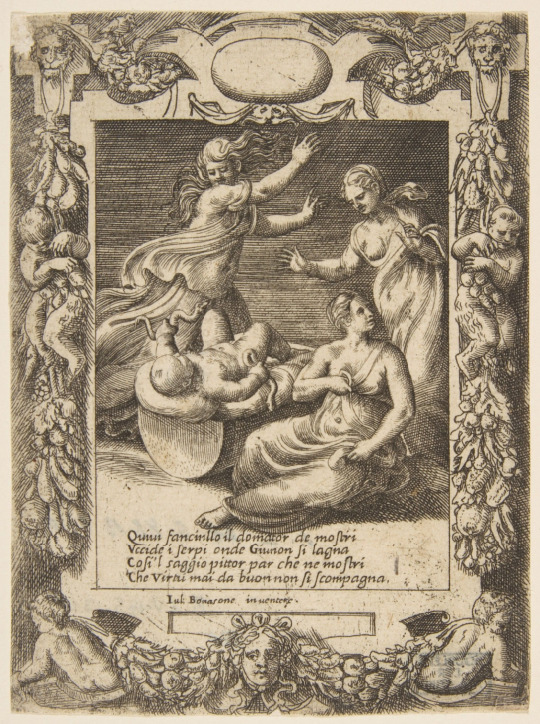
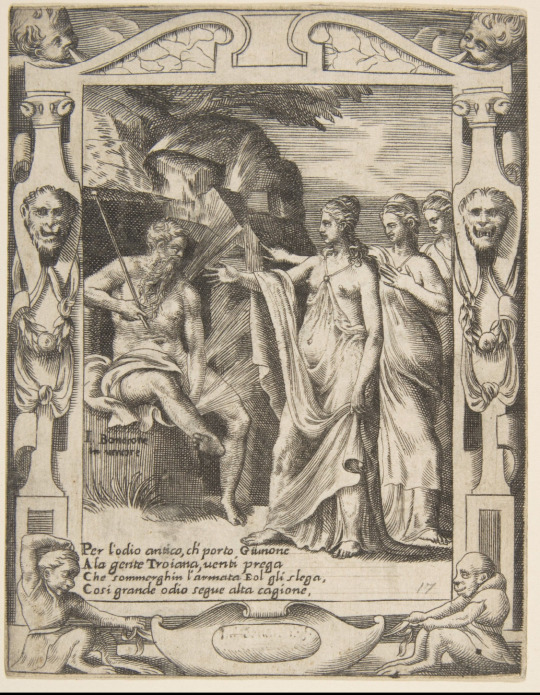
It has the well known myths and popular art subjects but it also has lesser known myths

Like this is one of the few artistic depictions of the binding of Hera

Hera defending Athena from Eros’s bs (not an actual myth as far as I know but still funny)


But there are also others that don’t seem to specifically reference any myth

There’s also this art of Zeus and Hera.
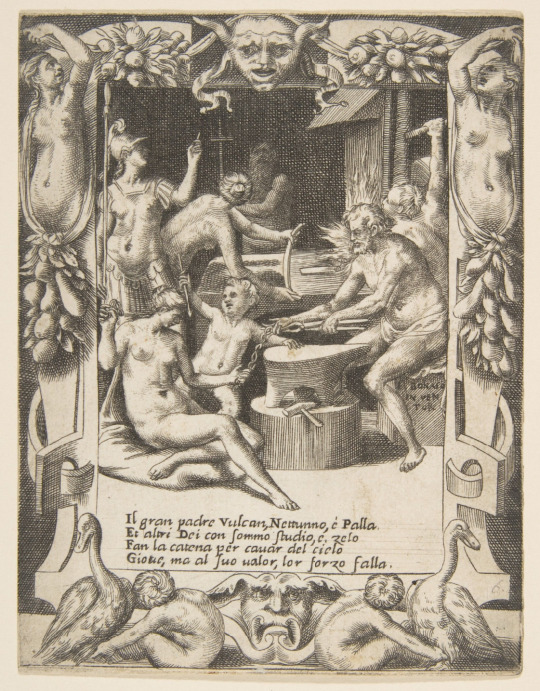
There is also this weird one where Hephaestus (and Aphrodite?) participate in the coup against Zeus by making the chains that will eventually bind him. Tho I’m pretty sure the only gods named as part of the rebellion are Hera, Poseidon, Athena and Apollo.
#Giulio Bonasone#Giulio Bonasone making a whole series about Hera is fan behavior lol#he’s just like me fr#tho there are other illustrations that don’t really have anything to do with Hera#greek mythology#ancient greek mythology#greek pantheon#hera#greek goddess#hera goddess#hera deity#hera greek mythology#zeus#hera x zeus#goddess hera
23 notes
·
View notes
Text
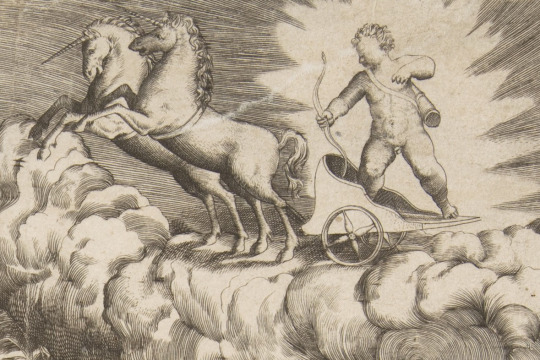

The Triumph of Love, cupid riding a chariot drawn by unicorn
Giulio Bonasone, 1545
3 notes
·
View notes
Text

N'Hèracles s'enduu els ramats de Gerió, amb les Hespèrides a la dreta, per Giulio Bonasone. Gravat, 29'5 x 44'2 cm; entre 1532 i 1576.
#art#dibuix#gravat#mite#mitologia#Hèracles#Gerió#Dotze labors d'Hèracles#Hespèrides#Catalunya mítica#Giulio Bonasone#segle XVI
2 notes
·
View notes
Text

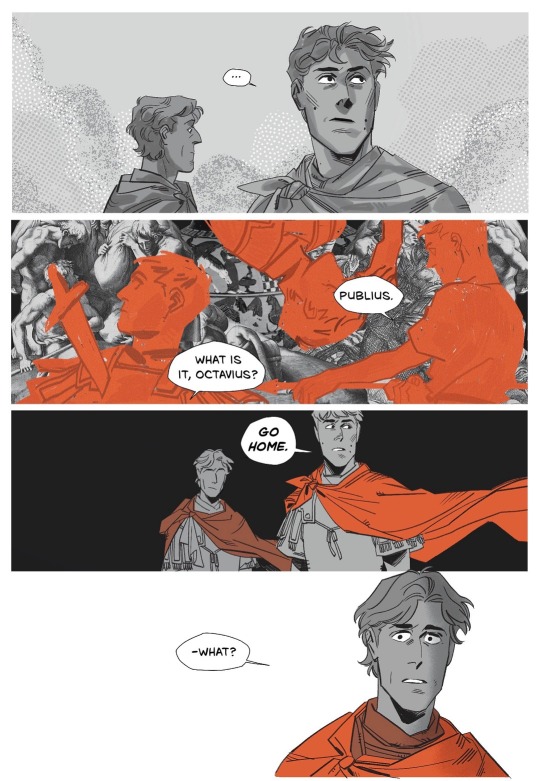
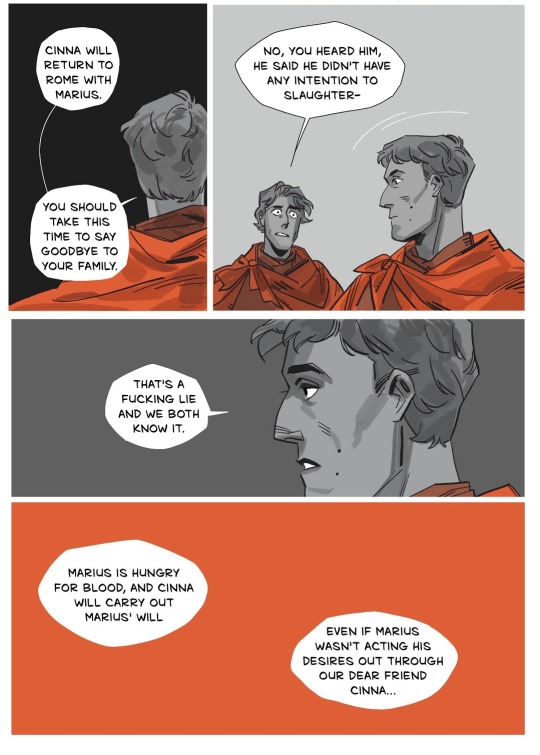

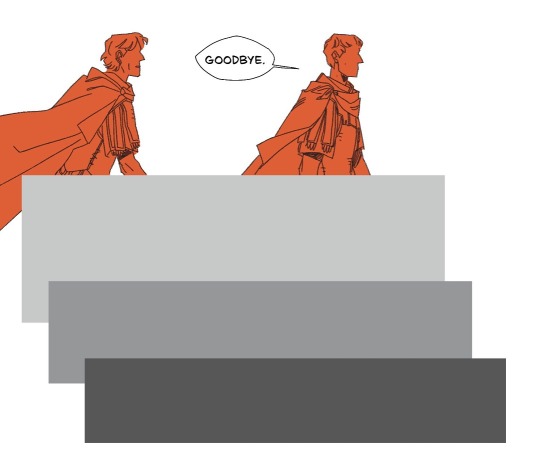
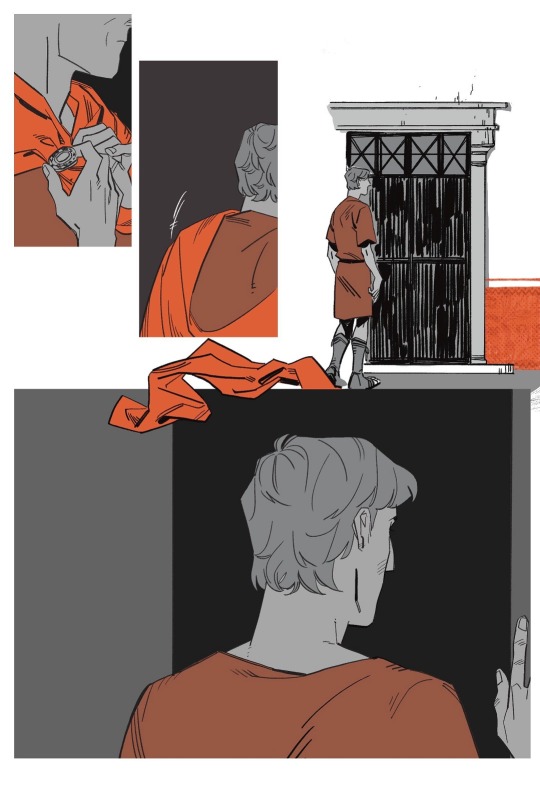
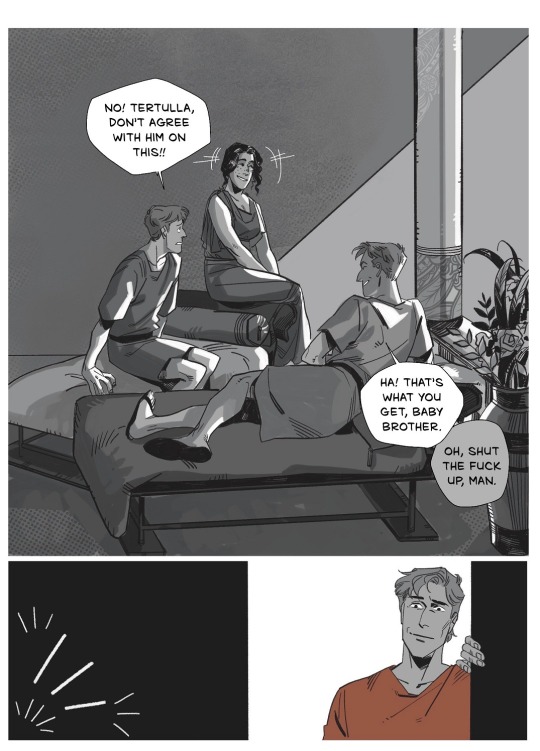

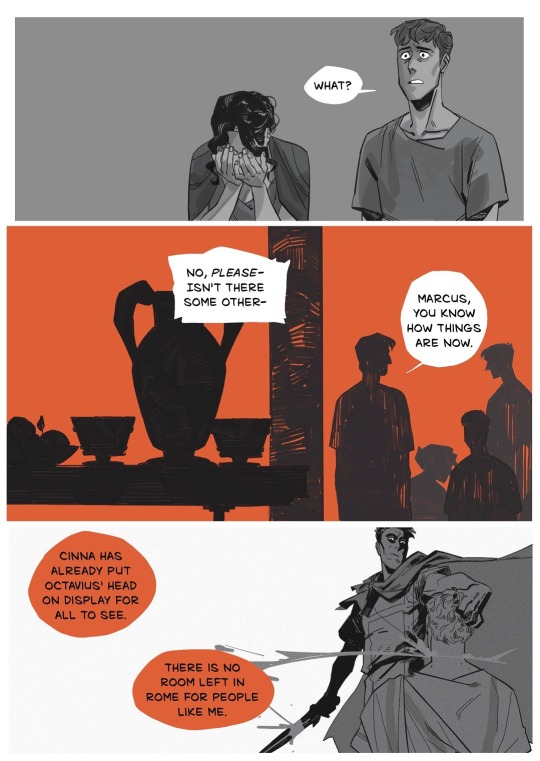
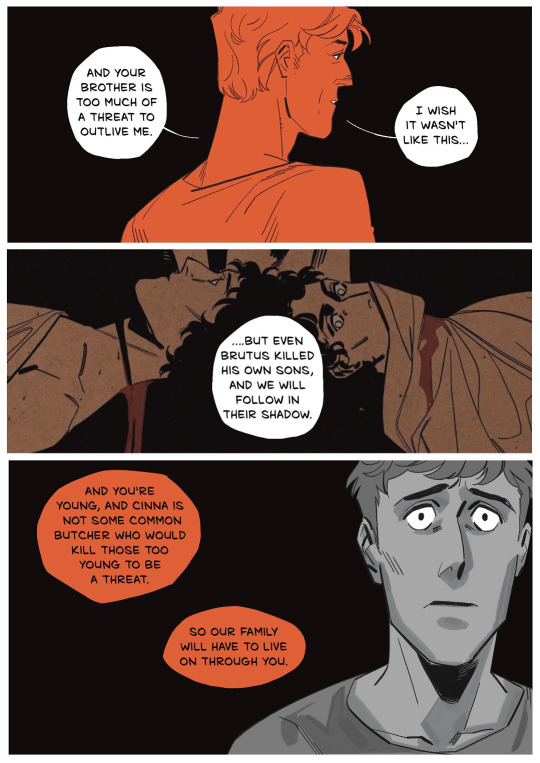
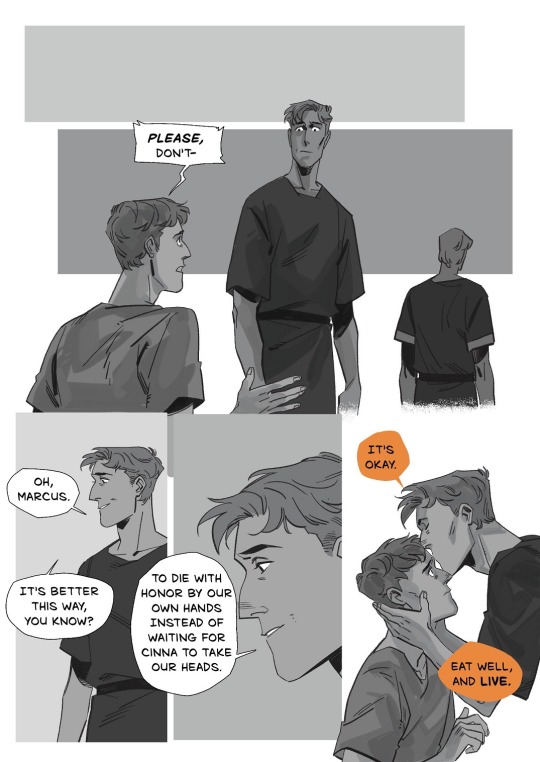
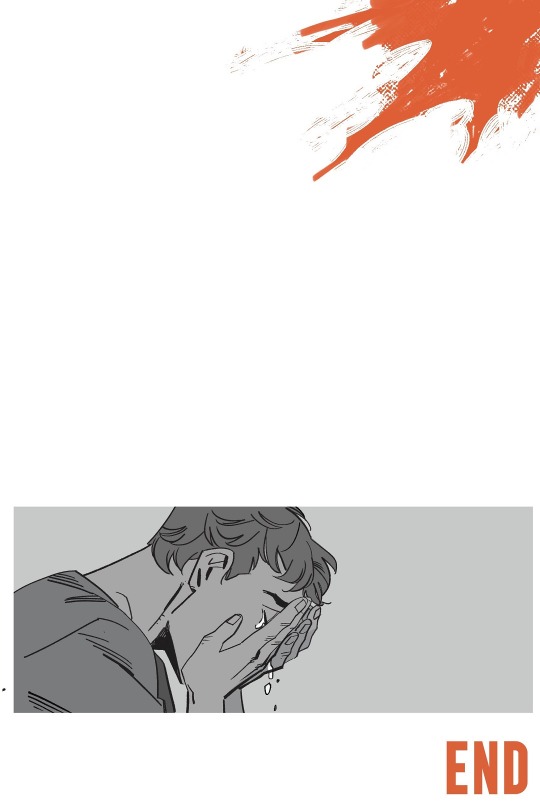
TRIKARANOS CHAPTER I: S·T·T·L
TRIKARANOS is a dramatized narrative based on ancient events following Crassus (and Pompey and Caesar) through the years 87-48 BCE. Intended for an adult audience.
⭐ Trikaranos will always be free to read. In the near future, you’ll have the option to support this comic & my ability to spend time making it (I Am Extremely Fucking Broke And Have Bills To Pay etc etc) through Patreon! currently, I have a tip jar!
⭐ There is no set update schedule (chapters vary in length and will be posted as I finish working on them)
⭐ alternative places to read it (coming soon!)
CREDITS all additional art used are in the public domain, and the specific images used are open access, etc
🍊the first collage panel is combination of: Plate 113: Greeks Battling the Trojans (from Ovid's Metamorphoses), Antonio Tempesta / The Trojans pulling the wooden horse into the city, Giulio Bonasone (after Francesco Primaticcio) / Terracotta hydria displaying Achilles waiting to ambush Triolos and Polyxena
🍊the second collage panel is: The Lictors bringing Brutus the bodies of his Sons, Jacques Louis David / the paint over of Brutus executing is own sons is my own work based on the composition of this relief of Brutus and condemning his sons to death.
🍊I also used my own art: a panel from the Prologue, and my own illustration of Brutus with the bodies of his sons
📖 PREVIOUS CHAPTER | START HERE | ToC (under construction!)
UNDER THE CUT creator’s commentary, ancient citations, whatever else seems relevant. ideally, this is optional! you shouldn’t need the citations for it to make sense as it unfolds since it’s a comic and a story first and foremost, but it’s here if you’re curious about something or want to see where the inspiration is coming from!
I'm so fucking normal about Crassus and his family (<<< this is a lie)
Marcus Crassus was the son of a man who had been censor and had enjoyed a triumph; but he was reared in a small house with two brothers. His brothers were married while their parents were still alive, and all shared the same table, which seems to have been the chief reason why Crassus was temperate and moderate in his manner of life. When one of his brothers died, Crassus took the widow to wife, and had his children by her, and in these relations also he lived as well-ordered a life as any Roman.
Plutarch, Crassus
like, it actively fucks me up that this is something that's survived about him for over 2,000 years. they all ate together at the same table. Jesus Christ.
so! Crassus' dad! Publius Licinius Crassus (consul 97) fought on the side of Cn. Octavius (consul 87) in the Bellum Octavianum, and it didn't go great for him.

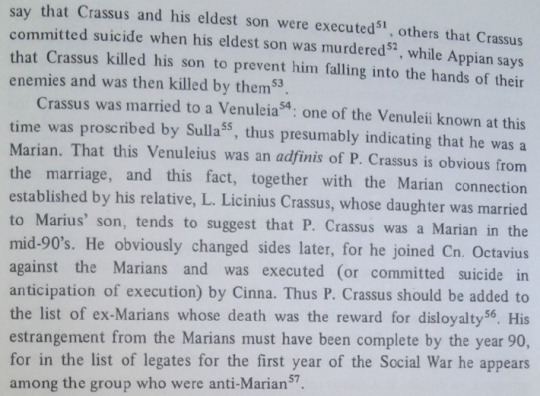
Crassus: A Political Biography, B.A. Marshall
also. currently, if you look Publius Licinius Crassus up on wikipedia for an overview, his page lists his son (and also my main character for this comic) with the cognomen Dives, which is in-fucking-correct.

Marcus Crassus and the Late Roman Republic, Allen Mason Ward
and to circle back to houses and meals shared with family, some citations that made me feel some kind of way when I read them


Marcus Crassus and the Late Roman Republic, Allen Mason Ward
finally, there is discourse or whatever on the placement of the sons of Publius Licinius Crassus. Crassus is the baby brother here simply because I'm writing this story and I get to pick the themes, but also because no one has provided a solid enough argument for him being the second eldest son that I'm willing to buy into with enthusiasm, and I'm more inclined towards G. Sampson's conclusion on the matter.


Defeat of Rome: Crassus, Carrhae, and the Invasion of the East, Gareth C. Sampson
and while I'm just kind of talking about stuff that I read that I enjoyed, this article by Martin Stone lives in my head rent free

A Year of One's Own: Dating the Praetorship of Marcus Crassus, Martin Stone
#trikaranos the komik#hehghghh HELLO i'm back. oof. hgh#if i think too much about them as a family i take critical damage to my hit points
565 notes
·
View notes
Photo

Here she comes — you better watch your step
“This at last is bone of my bones and flesh of my flesh,” the first man says upon seeing the newly created being called woman. The recriminations come all too soon, after Eve shares with him the forbidden fruit.
The mid-16th century engraving by Giulio Bonasone copies Michelangelo’s Cistine Chapel painting.
7 notes
·
View notes
Text

Giulio Bonasone, Epimetheus Opening Pandora's box, 1531–76, The Metropolitan Museum
Reference 15
2 notes
·
View notes
Text
Constantine The Great: The Christian Conqueror of Ancient Rome

Photo Credit: Loop Images/Universal Images Group via Getty Images).
Constantine I was the first and only Roman Emperor to be granted the title “The Great.” A revolutionary and unstoppable force, Constantine was also the first Emperor to convert to Christianity, initiating the creation of a new Roman Empire that would eventually lead to its downfall.
Who was Constantine the Great?
Constantine was born in the city of Naissus (now modern Serbia) on February 27, 272 AD. His father, Flavius Constantius, was one of the imperial bodyguards of then-ruler Emperor Aurelian. Constantine’s mother was a poor Greek woman named Helena, likely a mistress of Constantius.

Late Antique Roman Colossal Head of Constantine (Photo Credit: VCG Wilson/Corbis via Getty Images).
Constantius rose through the ranks of the Roman Army quickly, eventually becoming governor of the Roman province Dalmatia. In 284 AD, Emperor Diocletian became the new ruler of the Roman Empire. Several years later, Diocletian appointed his close friend Maximian as his co-Emperor.
In 288 AD, Maximian declared that Constantius would join his praetorian prefect, or “high office,” in the city of Gaul – which is now comprised of France, Luxemburg, Belgium, and Switzerland. Later on, Maximian would appoint Constantius to Caesar in the Tetrarchy of Diocletian. During this time, Constantine came of age and served as his father’s heir presumptive until his death in 306 AD.
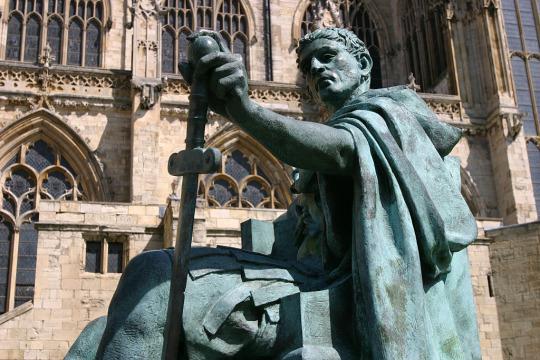
Statue of Constantine the Great at York which stands on the spot where he was proclaimed Emperor by his soldiers in 306 after the death of his father Constantius Chlorus. (Photo Credit: Peter Thompson/Heritage Images/Getty Images).
Growing up, Constantine mingled with both pagans and Christians, though he was raised pagan he was tolerant of both religions. Constantine fought for Diocletian in several wars throughout Syria, Mesopotamia, and even Britain. It was here in York, England that Constantius died in 306 AD. Prior to his death, he declared his support to make his son Constantine an Augustus – and the provinces of Gaul and Britain soon followed suit.
Constantine declared himself Caesar, which directly challenged his co-ruler Maxentius. As the new Emperor of Rome, Constantine ruled over one of the largest Roman armies in Gaul, Britain, and Spain. He ordered massive building projects in the Gaulian capital of Trier, which included renewed fortifications, a large palace complex, a formal audience hall, and an imperial bathhouse. Soon after the start of his reign, many commented that Constantine’s rule was similar to that of his father’s.
Constantine and Christianity
By 311 AD, Constantine continued to rule over the Western empire and a new ruler, Licinius, controlled the East. Maxentius felt betrayed by his sudden loss of power and launched a revenge war against Constantine. Maxentius seized control over Italy as Constantine moved into Milan to win it back.
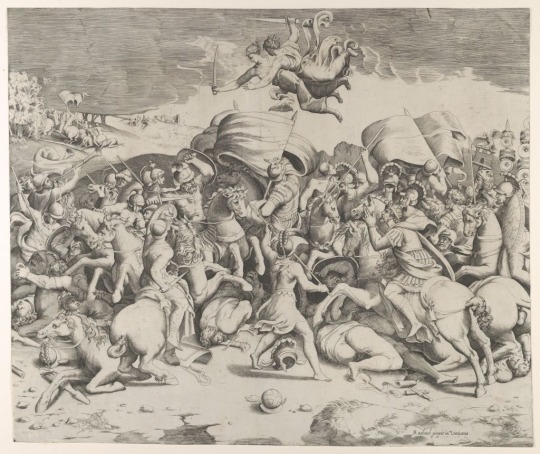
Constantine defeating the tyrant Maxentius, by Giulio Bonasone circa 1544. (Photo Credit: Heritage Art/Heritage Images via Getty Images).
As Constantine marched on Maxentius, his army, for the first time, carried banners inscribed with the Greek letters X (chi) and P (rho) – spelling “Christ.” Constantine claimed that God had spoken to him and instructed him to make the banners to ensure their victory – regardless of if the banners helped, Constantine’s army defeated Maxentius.
As a newly-minted Christian, Constantine set his sights on his opposing emperor Licinius – who had supposedly persecuted the Christians in the Eastern Roman Empire. Weeks of fighting between Constantine and Licinius eventually drove the pagan ruler to surrender his throne in exchange for his life. Constantine promised to spare Licinius, but once he had seized power, had him executed.
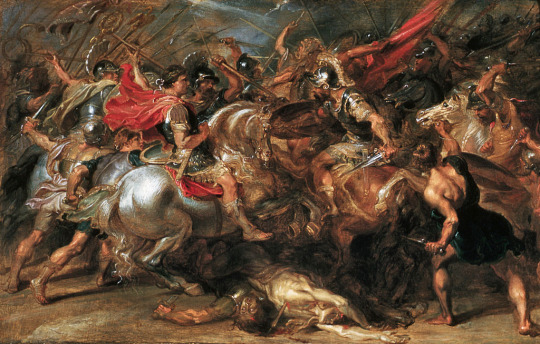
The Battle of Constantine and Licinius by Peter Paul Rubens, circa 1622. (Photo Credit: Barney Burstein/Corbis Historical via. Getty Images).
For the first time in years, Rome had a single emperor. For the first time in history, that emperor was a Christian.
Building a New Empire
Constantine’s predecessor Diocletian had chosen Nicomedia (in present-day Turkey) as his seat of power in the East, but the new emperor recognized the shifting of the center of his empire toward Byzantium, located at the precipice of Egypt, Asia, and the province of Thrace. Here he chose to establish a new capital of the Eastern Roman Empire, Constantinople.

Illumination from the Vatican Codex which is believed to represent the Church of the Holy Apostles in Constantinople. (Photo Credit: James of Kokkinobaphos/Biblioteca Apostolica Vaticana via. Wikimedia Commons/Public Domain).
Constantinople became a hub for Christian learning and cultural preservation. The city housed famous relics like the True Cross, which was believed to be the exact cross Jesus Christ was crucified on 300 years earlier, and the Rod of Moses. Constantine built the Holy Church of the Holy Apostles on top of the old temple of the Greek Goddess Aphrodite.
The converted Christian emperor also took charge of new religious policy in the Roman Empire to combat the growing animosity between Roman pagans and Christians. As an effort to ease tensions, Constantine first legalized Christianity and banned Christians from taking part in the pagan religion, which relieved fighting over non-participating Christians.
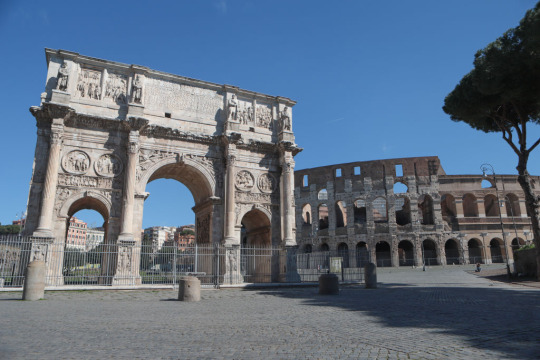
The Arch of Constantine stands in the shadow of the Colosseum in Rome, Italy. (Photo Credit: Andrea Pirri/NurPhoto via Getty Images).
In an effort to increase social harmony, Constantine assembled a council of bishops who traveled to the city of Nicaea to teach the public about the basic tenants of Christianity. By removing the intense persecution against Christians throughout the Empire and declaring that the Christians could follow their faith without oppression, Constantine changed religious policy practically overnight.
The Inner World of an Emperor
Constantine feared that he would meet the fate of many Roman emperors before him: a military coup ending in assassination. To minimize his chances of sharing the same fate as Julius Caesar, Constantine re-organized the entire senate system to give power to provincial governors he trusted.

Roman Sculpture Bust of Emperor Constantine (Photo Credit: Bill Ross/Corbis via Getty Images).
The Emperor also simplified the Roman Army by disbanding legions that he believed were threatening while streamlining the capabilities of armaments to keep possible military traitors far away from the capital.
Constantine wasn’t the only one in his family who reached international fame. His mother Helena became Saint Helena of Constantinople after undertaking a pilgrimage to the Holy Land. She supposedly rediscovered the True Cross.
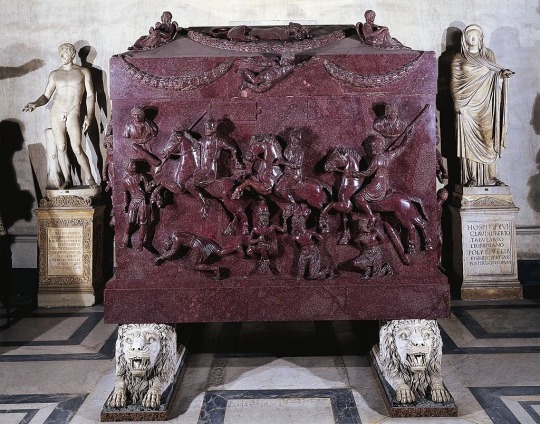
Porphyry sarcophagus of Saint Helena of Constantinople. (Photo Credit: DEA /V. Pirozzi/De Agostini via Getty Images).
Not all of Constantine’s family were saints; in fact, his oldest son Crispus and his wife Empress Fausta were both put to death at the Emperor’s behest. Their names and images were all but erased from the historic record, and at the time many speculated that Crispus and Fausta were in an illicit relationship. Crispus was poisoned in June 326 AD and Fausta followed a month later, dying in an overheated bath.
The End of an Empire
Constantine met his own end on May 22, 337 AD. After a lengthy illness, Constantine hoped to be baptized before his death in the River Jordan. But the sick Emperor never made it to the Holy Land, dying while trying to reach his city of Constantinople. His body was buried at the Church of the Holy Apostles but was later desecrated and destroyed during the Fourth Crusade in 1204.
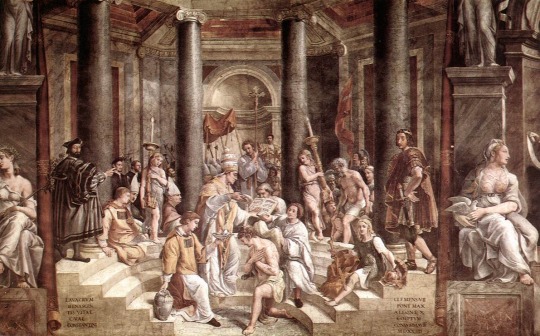
The Baptism of Constantine, a fresco painted by famed Renaissance artist Raphael in 1517. (Photo Credit: Vatican Museums via. Wikimedia Commons/Public Domain).
The Church of the Holy Apostles was also destroyed during the Crusades, and the location of Constantine’s burial site is lost to the sands of time forever. His sons Constantine II, Constantius II, and Constans ruled the Empire after their father. During his reign, Constantine the Great re-united Ancient Rome under one emperor and expanded his empire into what would become Europe.
— Published by Elisabeth Edwards in Featured, Instant Articles, MSN
0 notes
Photo

Luna, from the series Planets by Giulio Bonasone (1530-70)
#giulio bonasone#art#engraving#fine art#16th century#16th century art#renaissance#renaissance art#italian art#italian artist#mythology#roman mythology#roman goddess#luna#selene#moon#zodiac#planets#classic art
2K notes
·
View notes
Photo

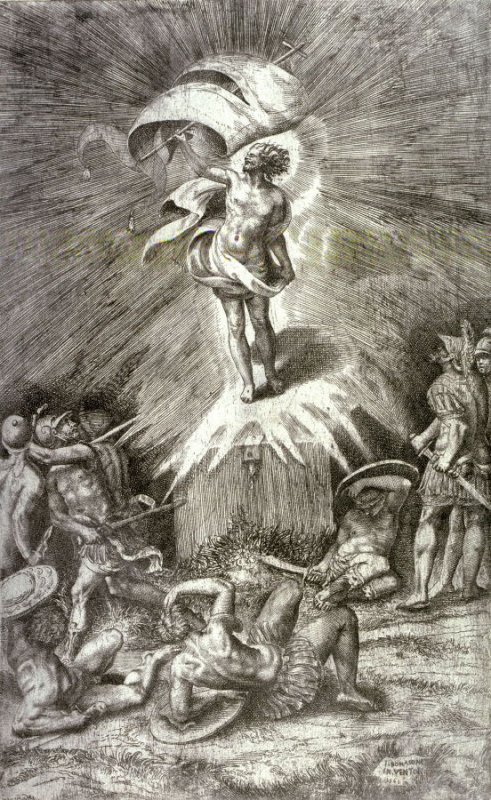
CHRIST IS RISEN, ALLELUJIA, ALLELUJIA
[Empire Ants, Gorillaz (ft. Little Dragon) // The Resurrection, Giulio Bonasone]
#web weaving#Easter Sunday#Easter#Jesus Christ#giulio bonasone#italian art#baroque art#gorillaz#little dragon#plastic beach#Christianity#Christian tumblr#Christblr#Catholic tumblr#Catholicism#art
10 notes
·
View notes
Photo
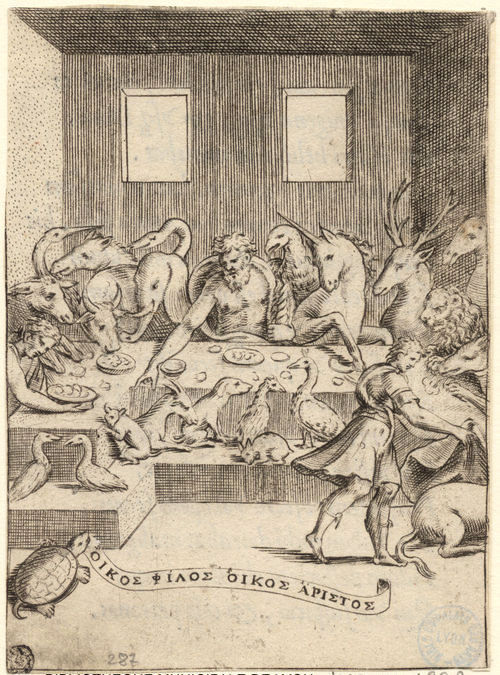
Giulio Bonasone - Zeus invites all the Animals, 15th c.
24 notes
·
View notes
Photo



Jupiter and Juno Being Received in the Heavens by Ganymede and Hebe, Pluto Riding a Chariot Descending into Hell, and Neptune in His Chariot Being Drawn by Seahorses by Giulio Bonasone, from the “Division of the Universe” series
Italian, 16th century
engraving
Metropolitan Museum of Art
#art history#mythology#print#engraving#Giulio Bonasone#Italian#art#series#Division of the Universe#Jupiter#Juno#Ganymede#Hebe#Pluto#underworld#Neptune#seahorse#Renaissance#Mannerism#Mannerist#Metropolitan Museum of Art
42 notes
·
View notes
Photo

Bust portrait of Michelangelo facing right, set within a cartouche, a carved tablet or drawing of same with rolled up ends,representing a scroll. It was made in 1546 by Italian painter Giulio Bonasone (1498-1576).
15 notes
·
View notes
Photo
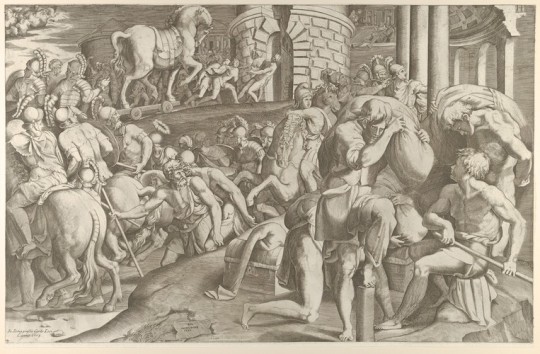
The Trojans hauling the wooden horse into Troy, Giulio Bonasone, 1545 (published 1773), Metropolitan Museum of Art: Drawings and Prints
The Elisha Whittelsey Collection, The Elisha Whittelsey Fund, 1949
Size: Sheet: 15 15/16 × 24 7/8 in. (40.5 × 63.2 cm)
Medium: Engraving; third state of three
https://www.metmuseum.org/art/collection/search/679283
11 notes
·
View notes
Photo

Saint Paul Preaching, Giulio Bonasone, 16th century, Harvard Art Museums: Prints
Harvard Art Museums/Fogg Museum, Gift of Belinda L. Randall from the collection of John Witt Randall
https://www.harvardartmuseums.org/collections/object/245637
4 notes
·
View notes
Text
Wisdom from the Early Cynics, Antisthenes 16
Timon finds fault with him for writing so much and calls him a prolific trifler.
He died of disease just as Diogenes, who had come in, inquired of him, "Have you need of a friend?"
Once too Diogenes, when he came to him, brought a dagger.
And when Antisthenes cried out, "Who will release me from these pains?" Diogenes replied, "This," showing him the dagger.
"I said," answered the other, "from my pains, not from life!"
It was thought that he showed some weakness in bearing his malady through love of life. And here are my verses upon him:
Such was your nature, Antisthenes,
that in your lifetime you were a very bulldog
to rend the heart with words, if not with teeth.
Yet you died of consumption.
Maybe some one will say, What of that?
We must anyhow have some guide to the world below.
—Diogenes Laërtius, 6.18-19
IMAGE: Giulio Bonasone, Diogenes and Antisthenes (1555)
caede sivis nihil tam durum quome summove as dum aliquid dixeris
"Strike if you want, nothing is so tough to drive me away, as long as you have something to say."

2 notes
·
View notes